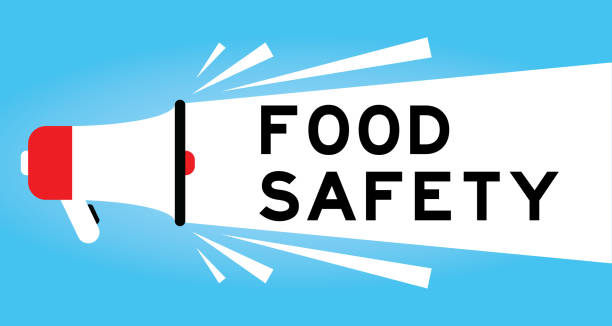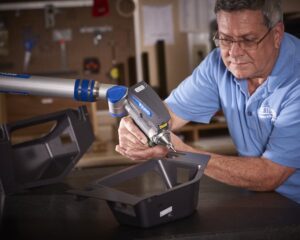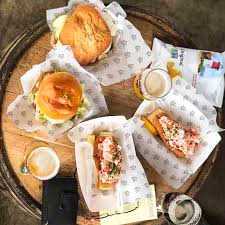Imagine you’re running a bustling supermarket or retail chain. Shelves are stocked, customers are streaming in, and your team’s hustling to keep things moving. But in the back of your mind, there’s that nagging worry: is your food safety game strong enough? A single slip—say, a mislabelled product or a contaminated batch—could tank your reputation and cost you big time. That’s where ISO 22000 certification comes in. It’s not just a fancy badge; it’s your ticket to proving your store’s food safety is rock-solid, keeping customers safe and your brand shining. So, why should retailers and supermarkets care about ISO 22000? Let’s break it down.
What’s ISO 22000, Anyway?
First things first: ISO 22000 is the global standard for food safety management systems (FSMS). It’s like a playbook for ensuring every step of your food supply chain—from supplier to shelf—is safe and compliant. Think of it as a promise to your customers that the milk, bread, or frozen pizza they grab from your aisles won’t land them in trouble. For retailers, it’s about more than just meeting regulations; it’s about building trust in a world where one bad review can go viral.
Why Retailers Should Jump on This
If you’re in retail or managing a supermarket, you’re already juggling a million things—inventory, staffing, customer complaints. So, why add ISO 22000 to your plate? Because it’s tailor-made for your world. Here’s why it fits like a glove:
- You’re the last stop. As a retailer, you’re the final link before food hits the consumer. ISO 22000 ensures your suppliers and processes are up to par, so you’re not left holding the bag if something goes wrong.
- Trust is your currency. A certification like this tells customers you’re serious about safety, giving you an edge over competitors who skimp on standards.
Here’s the thing: this isn’t just about dodging disasters. It’s about standing out in a crowded market. Customers want to shop where they feel safe, and ISO 22000 is your way to prove you’ve got their back.
What Does ISO 22000 Cover?
So, what’s involved in getting certified? ISO 22000 is all about building a food safety management system that works for your store. It blends HACCP principles (Hazard Analysis and Critical Control Points) with practical steps to keep food safe. Here’s a quick rundown of what it tackles:
- Hazard identification: Spotting risks like biological, chemical, or physical contaminants in your supply chain.
- Control measures: Setting up checks—like temperature controls or supplier audits—to prevent issues.
- Traceability: Ensuring you can track every product back to its source, so recalls are swift and targeted.
- Continuous improvement: Regularly tweaking your system to stay ahead of new risks or regulations.
Sounds like a lot, right? It is, but it’s not about reinventing the wheel. You’re likely already doing some of this—ISO 22000 just gives you a structured way to pull it all together and prove it to the world.
The Emotional Pull: Why This Matters to You
Let’s pause for a second. You know what feels good? Knowing your store’s shelves are stocked with safe products. That mom buying baby food? That elderly couple picking out their weekly groceries? They trust you, and ISO 22000 helps you honor that trust. It’s not just about avoiding lawsuits or fines—it’s about being the retailer people rely on, day in and day out.
But let’s be real: the road to certification can feel daunting. You’ll need to rally your team, document processes, and maybe face some pushback from staff who hate change. That’s where the emotional payoff kicks in. When you see your systems running smoothly, and customers keep coming back because they trust your brand, it’s worth every ounce of effort.
Who Needs ISO 22000 Certification?
Wondering if this is for you? If you’re running a supermarket, managing a retail chain, or overseeing food sales, ISO 22000 is a no-brainer. It’s especially critical for:
- Large supermarket chains handling diverse products, from fresh produce to packaged goods.
- Smaller retailers looking to stand out in a competitive market.
- Stores with private-label products, where you’re directly responsible for safety.
You don’t need to be a food safety expert to start. The certification process guides you through building a system that fits your operation, whether you’re a corner market or a national chain.
How to Get Certified (Without Losing Your Mind)
Getting ISO 22000 certified isn’t a walk in the park, but it’s doable with the right approach. Here’s the basic roadmap:
- Gap analysis: Figure out where your current processes stand compared to ISO 22000 requirements. This is like taking a hard look at your store’s food safety pulse.
- Build your FSMS: Develop a food safety management system—think documented procedures, supplier checks, and staff training.
- Maintain and improve: Certification isn’t a one-and-done deal. You’ll need regular audits to keep your status.
Choosing the Right Certification Body
Not all certification bodies are equal. Picking the right one can make or break your experience. Here’s what to look for:
- Industry experience: Choose a body with a track record in retail or food safety, like Bureau Veritas or Intertek.
- Support level: Some offer pre-audit guidance or templates, which can be a lifesaver for busy retailers.
- Cost transparency: Get clear on fees upfront—certification isn’t cheap, but it’s an investment in your brand.
Here’s a quick aside: some retailers worry certification’s only for big players like Walmart or Tesco. Not true! Smaller stores can benefit just as much, especially if you’re looking to expand or attract safety-conscious customers.
The Challenges: Keeping It Real
Let’s not sugarcoat it: certification has its hurdles. You’ll need to invest time, money, and effort. Staff might grumble about extra paperwork or training. Auditors can feel like they’re poking holes in your operation. But here’s the flip side: those challenges make you stronger. Every gap you close, every process you streamline, makes your store safer and more efficient. It’s like upgrading your store’s immune system.
Why Now’s the Time to Act
You know what? The timing couldn’t be better. Food safety’s in the spotlight—think recent recalls on leafy greens or packaged snacks. Customers are demanding transparency, and regulators are cracking down. Plus, with summer shopping surges (hello, BBQ season), a safety certification can give you an edge during peak times. The retail world’s competitive, and ISO 22000 is your chance to shine.
Your Next Steps: How to Get Moving
Ready to take the plunge? Here’s how to start:
- Assess your gaps. Hire a consultant or use online tools to see where your store stands.
- Train your team. Look into ISO 22000 training from providers like PECB or online platforms like Coursera.
- Set a timeline. Aim for certification within a year, and break the process into bite-sized steps.
Honestly, in retail, trust is everything. ISO 22000 certification isn’t just a credential—it’s a promise to your customers that safety comes first. So, what’s holding you back? Your supermarket’s reputation, and your customers’ safety, are worth it.
- ISO 22000 Certification Made Easy for Supermarkets
- But let’s be real: the road to certification can feel daunting. You’ll need to rally your team, document processes, and maybe
- ISO 22000 Certification
Related posts:
 Machinery and Equipment Industry Email List: Unlocking Opportunities for B2B Marketing Success
Machinery and Equipment Industry Email List: Unlocking Opportunities for B2B Marketing Success
 Amazon Virtual Assistant: The Perfect Help System for Online Retailers
Amazon Virtual Assistant: The Perfect Help System for Online Retailers
 CodeIgniter Development Company: Empowering Scalable Web Solutions for Modern Businesses
CodeIgniter Development Company: Empowering Scalable Web Solutions for Modern Businesses
 How Do Toll Free Number Service Streamline Call Center Operations
How Do Toll Free Number Service Streamline Call Center Operations
 Can Tourism Companies Use SMS Smart Links for Package Details?
Can Tourism Companies Use SMS Smart Links for Package Details?
 How UAE Startups Are Embracing Automation Through Apps Your Solution here
How UAE Startups Are Embracing Automation Through Apps Your Solution here
 “Frames that Speak”: Why a Video Editing Company in India Is Your Brand’s Secret Weapon
“Frames that Speak”: Why a Video Editing Company in India Is Your Brand’s Secret Weapon







